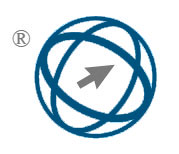Hierarchical Multi-Stream Feature Network for Digital Art Aesthetic Quality and Style Classification Through Intelligent Systems
Abstract
Digital art analysis is evolving rapidly, with intelligent systems playing a growing role in understanding aesthetic quality and artistic styles. In this work, we present the Hierarchical Multi-Stream Feature Network (HMSFN), a deep learning framework designed to improve the way visual features are extracted and classified across different styles and aesthetic levels. The study is based on a curated dataset of 213,000 digital artworks sourced from online galleries and collections, covering a wide range of creative expressions and thematic categories. To enhance data quality and balance, we applied specialized preprocessing techniques including Contrast-Balanced Normalization, Dominant Color Mapping, and Gradient-Symmetric Scaling. Additionally, Weighted Synthetic Feature Augmentation (WSFA) was introduced to address class imbalance, while an Adaptive Feature Filtering Framework (AFFF) was used to remove redundant features and retain the most informative ones. The model was trained using an 80:20 split and evaluated against several leading deep learning approaches. HMSFN, which combines DenseNet, ConvNeXt, and Vision Transformer in a multi-stream configuration, achieved outstanding results—99.0% accuracy, 98.6% F1-score, 97.5% LCCR, and an AUC of 99.3%. These findings highlight the effectiveness of our approach in capturing complex visual attributes and support its use in digital art classification and computational aesthetics.
Full Text:
PDFReferences
S. Aris, B. Aeini, and S. Nosrati (2023) A digital aesthetics? Artificial intelligence and the future of the art, Journal of Cyberspace Studies, vol. 7, no. 2, pp. 219–236.
G. B. Takala (2023) The interactive creativity of the digital era: Exploring how media art redefines the relationship between audience and artwork, Studies in Art and Architecture, vol. 2, no. 3, pp. 28–44.
A. Karimov, E. Kopets, T. Shpilevaya, E. Katser, S. Leonov, and D. Butusov (2023) Comparing neural style transfer and gradient-based algorithms in brushstroke rendering tasks, Mathematics, vol. 11, no. 10, pp. 2255.
A. Singh, V. Jaiswal, G. Joshi, A. Sanjeeve, S. Gite, and K. Kotecha (2021) Neural style transfer: A critical review, IEEE Access, vol. 9, pp. 131583–131613.
O. Marchenko, O. Pushonkova, O. Gladun, O. Kolomiiets, V. Protsyshyn, and S. Pianzin (2023) Expansion as a culture-creating principle of post-modernity: Semantic contexts and aesthetic practices, Journal of Education Culture and Society, vol. 14, no. 2, pp. 57–77.
Y. Lian and J. Xie (2024) The evolution of digital cultural heritage research: Identifying key trends, hotspots, and challenges through bibliometric analysis, Sustainability, vol. 16, no. 16, pp. 7125.
P. Clifford, D. Brown, P. Anderson, R. Angelopoulos, and M. Wainwright (2024) Enhancing large language models with stochastic semantic drift: A novel conceptual enhancement.
Y. Wang, Y. Jiang, X. Ning, and L. Gao (2024) Bridging cultural perspectives: Developing a sustainable framework for the comparative aesthetic evaluation of Eastern and Western art, Sustainability, vol. 16, no. 13, pp. 5674.
L. Liu, R. Ahmad, S. Ahmad, and X. Jiang (2024) Examining the nuances of Huizhou architecture and building decoration elements within the framework of rural development and urban aesthetics through the application of object detection and explicative analysis, Journal of Autonomous Intelligence, vol. 7, no. 5.
B. T. Spee, H. Leder, J. Mikuni, F. Scharnowski, M. Pelowski, and D. Steyrl (2024) Using machine learning to predict judgments on Western visual art along content-representational and formal-perceptual attributes, Plos One, vol. 19, no. 9, pp. e0304285.
J. Valencia, G. G. Pineda, V. G. Pineda, A. Valencia-Arias, J. Arcila-Diaz, and R. T. de la Puente (2024) Using machine learning to predict artistic styles: An analysis of trends and the research agenda, Artificial Intelligence Review, vol. 57, no. 5, pp. 118.
G. Qiu and J. Zhang (2023) Application of digital technology in painting using new media and big data, Soft Computing, vol. 27, no. 17, pp. 12691–12709.
J. Geng, X. Zhang, Y. Yan, M. Sun, H. Zhang, M. Assaad, and X. Li (2023) MCCFNet: Multi-channel color fusion network for cognitive classification of traditional Chinese paintings, Cognitive Computation, vol. 15, no. 6, pp. 2050–2061.
Z. Zeng, P. Zhang, S. Qiu, S. Li, and X. Liu (2024) A painting authentication method based on multi-scale spatial-spectral feature fusion and convolutional neural network, Computers and Electrical Engineering, vol. 118, pp. 109315.
Y. Xu and G. Xia (2023) Research on the development strategy of art industry based on RNN model, Applied Mathematics and Nonlinear Sciences.
P. Ukpaka (2024) Exploring creativity in fashion industry applications of generative adversarial networks (GANs), SSRN, vol. 4833151.
Y. Li and Q. Zhang (2024) The analysis of aesthetic preferences for cultural and creative design trends under artificial intelligence, IEEE Access.
T. Zhou, Z. Cai, F. Liu, and J. Su (2023) In pursuit of beauty: Aesthetic-aware and context-adaptive photo selection in crowdsensing, IEEE Transactions on Knowledge and Data Engineering, vol. 35, no. 9, pp. 9364–9377.
A. Shams, K. Becker, D. Becker, S. Amirian, and K. Rasheed (2024) Evolutionary CNN-based architectures with attention mechanisms for enhanced image classification, Artificial Intelligence: Machine Learning, Convolutional Neural Networks and Large Language Models, vol. 1, pp. 107.
W. Jiang, X. Wang, J. Ren, S. Li, M. Sun, Z. Wang, and J. S. Jin (2021) MTFFNet: A multi-task feature fusion framework for Chinese painting classification, Cognitive Computation, vol. 13, pp. 1287–1296.
F. B. Mofrad and G. Valizadeh (2023) DenseNet-based transfer learning for LV shape classification: Introducing a novel information fusion and data augmentation using statistical shape/color modeling, Expert Systems with Applications, vol. 213, pp. 119261.
M. Hassanin, S. Anwar, I. Radwan, F. S. Khan, and A. Mian (2024) Visual attention methods in deep learning: An in-depth survey, Information Fusion, vol. 108, pp. 102417.
X. Zhang and T. Ding (2024) Style classification of media painting images by integrating ResNet and attention mechanism, Heliyon, vol. 10, no. 6.
N. Shi, Z. Chen, L. Chen, and R. S. Lee (2024) ReLU-oscillator: Chaotic VGG10 model for real-time neural style transfer on painting authentication, Expert Systems with Applications, vol. 124510.
Berlin Arts School (2024) AASA-Dataset, [Data set], Kaggle, https://doi.org/10.34740/KAGGLE/DSV/10059992.
V. Werner de Vargas, J. A. Schneider Aranda, R. dos Santos Costa, P. R. da Silva Pereira, and J. L. Victória Barbosa (2023) Imbalanced data preprocessing techniques for machine learning: A systematic mapping study, Knowledge and Information Systems, vol. 65, no. 1, pp. 31–57.
T. Liao, L. Li, R. Ouyang, X. Lin, X. Lai, G. Cheng, and J. Ma (2023) Classification of asymmetry in mammography via the DenseNet convolutional neural network, European Journal of Radiology Open, vol. 11, pp. 100502.
W. Yu, P. Zhou, S. Yan, and X. Wang (2024) Inceptionnext: When inception meets convnext, in Proceedings of the IEEE/CVF Conference on Computer Vision and Pattern Recognition, pp. 5672–5683.
D. Han, X. Pan, Y. Han, S. Song, and G. Huang (2023) Flatten transformer: Vision transformer using focused linear attention, in Proceedings of the IEEE/CVF International Conference on Computer Vision, pp. 5961–5971.
M. Parvathi and T. Amy Prasanna (2023) Performance evaluation metrics of NBA, NAAC, NIRF, and analysis for grade up strategy, in Proceedings of the International Conference on Data Science and Applications: ICDSA 2022, vol. 1, pp. 89–107, Singapore: Springer Nature Singapore.
DOI: https://doi.org/10.31449/inf.v49i22.8065

This work is licensed under a Creative Commons Attribution 3.0 License.









